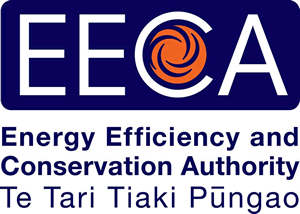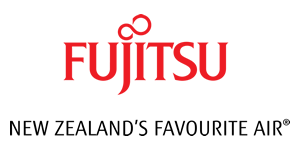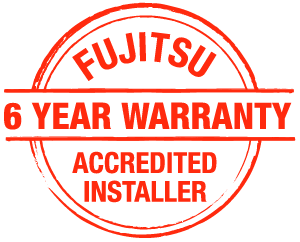Heat Pump & Air Conditioning FAQ'S
We install & Service Fujitsu Heat Pumps & Air Conditioning Units
Yes, we only use earth friendly refrigerants.
Yes, they are reliable and dependable. They have the same life expectancy as the common refrigerator.
The potential of heat loss through windows, doors, roof, and walls plus insufficient insulation can affect the amount of heating.
When there is proper insulation, you will only need a smaller heat pump this can save you electricity.
Heat pumps feature extra-quiet operation for your comfort - and the comfort of your neighbours too. Certain models also feature 'Quiet Mode', which further reduces indoor unit noise to as quiet as 21dB(A) for a comfortable night's sleep (the sound of leaves gently rustling in a tree is about 20dB(A)) - and reduces outdoor unit noise to as low as 41dB(A) (almost as quiet as a library, at 40dB(A)).
No they don't, they can actually exist unobtrusively in your house and they come in various size and style. Some types can be fixed into fireplaces, buried or mounted on the walls close to the ceiling. The ducted split systems can be concealed in the ceiling.
On average installation of a back to back system takes 3.5 to 4 hours, for more complex installation like a single split system, ducted or multi-systems it takes longer.
Just like an air conditioner using a remote control. It has on and off features, temperature, heat or cool mode, timer, and fan speed. It can also be programmed to turn on minutes before you arrive home to ensure a warm and cosy temperature or cool place when you get home.
Heat pumps simply transfer free heat (not air) from one place to another, just like your refrigerator does; that heat rising from the back of your fridge is coming from inside. An evaporator coil extracts warmth from the air inside, and transfers it out into your kitchen through the condenser coil in the back.
Heat pumps work in the exact same way. Two coils, one inside your home, and one outside are linked to extract warmth from the outside air and transfer inside your home.
This depends on how much heat is needed. Electric heating is generally a hundred percent efficient so for example for 6Kw of heating you also pay 6Kw of electricity but heat pumps have higher efficiencies from 350 to 400%. So, in order to produce 6Kw of heat, only 1.5kW of electricity is needed.
In other words for every dollar your spend running the heat pump you get 4 dollars worth of heat The size of the heat pump depends on the amount of heat that will be transferred into your home during winter and out of it during summer. It also depends on the size of your house.
To get a correct heat pump size for your house and size and number of windows and amount of insulation, consult with our specialists here at HAS.
We value your preferences so yes; you can give your suggestions and we can also work on your budget. Our engineers consider the size, and age of your house, whether it is properly insulated, how high your ceiling is, your window type, or if it's feasible to install pipe overhead or underground and outside your house.
The location of the condensing also depends on the space, nearness to neighbours, closeness of fences, and means of fixing it.
Every 8 weeks the indoor air filters of a heat pump needs to be cleaned. The instructions for doing this are found in the manual that goes with the unit upon installation.
A general maintenance check of the heat pump unit should be done every year to ensure optimum function.
Mostly, the outdoor unit is about the size of large suitcase. The outdoor unit is usually placed in a discreet place where it's also possible to run pipe work between outdoor and indoor.
We respect your budget so we work on the minimum cost possible.
An Inverter is a piece of technology that makes newer heat pumps more efficient. Older style heat pumps operate a fixed speed compressor motor. These motors are either on or off, so they stop and start repetitively to keep the temperature at the level you set it - similar to a fan heater set on a thermostat.
Newer, inverter style heat pumps use a variable-speed compressor motor that slows down and speeds up as required to maintain a more consistent temperature. This makes them more energy efficient. In fact, Inverter Heat Pumps are extremely efficient, meeting or exceeding the most stringent Energy Efficiency Ratings.
As soon as an inverter air conditioner is switched on, it provides the exact amount of power needed to rapidly cool or heat up the room. This enables it to reach the set temperature in about a quarter the time required by non-inverter models. So you're comfortable soon after you arrive home on a hot summer day, or after entering a room on a cold winter morning.
EECA (New Zealand's Energy Efficiency and Conservation Authority) promotes the blue ENERGY STAR® mark, which is applied to certain heat pumps to tell you which are the most energy efficient models in each range.
By choosing an ENERGY STAR® qualified unit, you will be assured of the very best efficiency and maximum savings on your heating costs.
Choosing an ENERGY STAR® heat pump can save you $150 on your power bill over a less efficient model.
A single-split heat pump consists of a single internal "fan" unit matched to a single external "condenser" unit, designed to heat the room it is sized for and installed into. Although some heat may flow into other areas, it's unlikely to effectively heat your whole house. If you want to heat other areas of the house you may be better to consider a multi-split system, where a single outdoor unit powers up to four indoor units.
This kind of setup can save space and power and cuts down on potential noise, but requires careful selection and installation.
Even when it gets down below zero degrees, there is still "warmth" in the air that can be utilised. In New Zealand a good quality heat pump should perform effectively when the temperature drops below zero degrees Celsius, provided it is sized and installed correctly. In colder climates the outside unit may frost over during the coldest part of the year, this is normal operation and your heat pump will automatically stop and carry out a de-frost cycle before returning to its normal operation.
Most heat pumps operate below zero degrees, with some units operating right down to -15oC.




